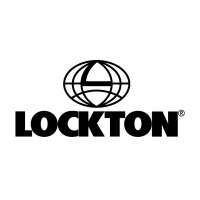Redefine your approach to benefits and avoid the ‘wellbeing washing’ tick-box trap
Employers have stepped up their corporate wellness benefit offerings in the battle to secure, retain and motivate talent.
But by focusing too much on wellness ‘activities’ and pursuits involved in wellness, the investment often misses the targets as it doesn’t consider employees’ actual needs.
‘Wellness’ or ‘wellbeing’ means different things to different people, and what contributes to this will vary depending on people’s stage in work, life, and lifestyle choices, which are constantly evolving.
Greater expectations
The workplace has changed dramatically in recent years, and with it, workers’ expectations and preferences for how work is done and balance with their lifestyle choices have also changed.
But wellbeing is not a static outcome, and any wellbeing support should be adaptable to meet changing needs.
More than half (51%) of employees believe their employer is guilty of ‘wellbeing washing’, according to a UK survey by the Institute of Occupational Safety and Health.
The research suggests that employers offer a wide range of ‘benefits’ employees don’t want or need.
These include ‘wellbeing services’, employee assistance programmes that focus on out-of-hours issues but don’t deal with work or office-related matters, and discounts on holidays that are still too expensive.
Furthermore, research by Claro found that 71% of organisations participate in mental health awareness initiatives, but only 36% of their staff describe the offerings as ‘good’.
‘Tick box exercise’
It is unlikely that businesses are intentionally ignoring employee need, but they might be swept up in a corporate ‘tick-box’ exercise of providing a wellbeing programme because it is the right thing to do, or just haven’t thought to measure the success of their programme to see if it is driving any real change or adding value.
The net result is employers in many instances are not keeping up with the pace of change in workplace dynamics and employee preferences.
Programmes to deliver wellbeing should not be seen in isolation, but as an integral component of an organisation’s employee benefits offering. This, in turn, is a key pillar of the broader employee value proposition (EVP), and, as such, any benefits/wellbeing offering should be designed and implemented with that symbiosis in mind.
A connected strategy
Starting with basic questions is a great way to build a connected strategy:
- What is the objective of the EVP and how does it align with the organisation’s business and strategic plans, including any diversity, equity, and inclusion (DE&I) and environmental, social and governance (ESG) objectives?
- How well does the employee benefits programme align with the EVP?
- How does the employee benefits programme align with the actual needs and preferences of the workforce?
- Are the benefits accessed, communicated, and implemented in an equitable and inclusive manner?
- Is the benefits programme conveyed holistically, all in one place?
It is astonishing what employees will tell their employers when asked the right questions. Start by creating employee focus groups and encourage staff to get involved to talk about what health and wellbeing means to them.
Consider carrying out an employee-wide survey and work with employee focus groups to encourage participation in the survey across their work cohorts.
To attract, engage and retain employees, organisations must challenge their current benefits/ wellbeing programme against five pillars of wellbeing:
- Physical
- Mental
- Financial
- Social
- Workplace
If the alignment and design of the benefits programme is right and includes credible messaging, it will soon help create a thriving workforce. Importantly, it requires understanding the demographic of your employees. For example, a younger cohort will have different needs from those over 55.
Targeting a diverse workforce
It’s a challenge for employers to create a meaningful EVP that is fit for purpose, while simultaneously addressing business priorities such as DE&I and ESG objectives. However, the perfect EVP does not exist as every business and person has different values, motivations, and requirements – and these constantly evolve.
Traditionally viewed ‘wellness activities’ such as onsite-massages or yoga are unappealing to many and are not the solution to delivering effective changes to those most in need. And progressive organisations offering fertility or gender dysphoria supports may inadvertently add to the DE&I mismatch by having restrictive eligibility criteria.
For some organisations, a review of its communications and engagement strategy around an offering, communicated holistically, is an excellent first start that can yield a tangible and low-cost result.
Employee-led insights
Further on, an offering could be re-shaped through a DE&I/ESG lens along with an analytical look at employee benefits service metrics and employee-led insights.
There is little doubt that benefits are an essential pillar supporting the overall EVP and wellbeing of the workforce, and wellbeing solutions addressing the specific needs of your employees will likely get a higher uptake.
However, this is linked to the type of organisation, its purpose, core focus areas and how the culture and values are amplified and perceived both internally and externally.
Your benefits should therefore be designed in a way that addresses employees’ evolving needs across all domains of wellbeing and be connected to the overall EVP and business strategy. Otherwise, the risk of benefits/wellbeing washing remains.
For further information, please visit the Lockton Benefits Advisory Service page.
Supplied by REBA Associate Member, Lockton People Solutions
Lockton provides creative people solutions that make life better, for your business and your people.








